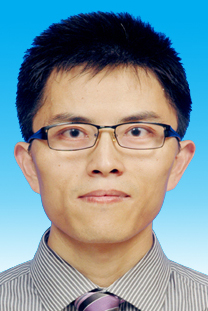Dr. Zhenhai Yu [HPSTAR, China]
Title: The investigation on structural evolution behavior of intermetallic compounds under extreme conditions
Time: 10:00 - 11:00 AM, Monday, January 18, 2016
Place: Conference Room 201, HPSTAR (Shanghai)
Host: Dr. Lin Wang
Abstract:
Phase transition of solid-state materials is a fundamental research topic in condensed matter physics, materials science and geophysics. A combined low temperature and high pressure X-ray diffraction (XRD) measurement has identified the phase transition curves of the iron-based superconductor EuFe2As2. The cation radii dependence of the phase transition pressure (T-cT) of AFe2As2 (A = Ca, Sr, Ba and Eu ) shows an opposite trend in which the compounds with larger ambient radii cations have a higher transition pressure.
Superconductivity has been observed in a majority of 3d transition-metal compounds, except for the Cr- and Mn-based compounds. Very recently, discovery of superconductivity on the verge of antiferromagnetic order in CrAs was observed via the application of external high pressure. Through a detailed analysis of pressure-dependent (up to 1.8 GPa) synchrotron x-ray diffraction data measured of CrAs, the analysis shows that CrAs undergoes interesting isostructural transformation with increasing pressure. The b lattice parameter of the orthorhombic unit cell (space group: Pnma) of CrAs is substantially reduced whereas the a and c lattice parameters show much less change, first increasing and then decreasing with pressure in the ambient to 1.8 GPa range. Furthermore, a joint schematic band model and density functional theory simulation were used to address the anomalous compression behavior of CrAs.
Topological insulators (TIs) found from the thermoelectric materials such as Bi2Te3, Sb2Te3, and Bi2Se3 hit the physics spotlight as another exciting newcomer, which act like insulators on the interior, while conduct on the surface. The Bi2Se3 is isostructural to Bi2Te3 and Sb2Te3 and thus it is natural to speculate that Bi2Se3 would follow the same transformation sequence under high pressure. The high-pressure experiments on Bi2Se3 indicate that a progressive structural evolution occurs from an ambient rhombohedra phase (Space group (SG): R-3m) to a monoclinic phase (SG: C2/m) and eventually to a body-centered tetragonal phase (SG: I4/mmm) evidenced by our XRD data up to 81.2 GPa rather than the recently reported disordered body-centered cubic (BCC) phase.
Biography of the Speaker:
 Dr. Zhenhai Yu obtained his Ph. D. degree in Condensed Matter Physics at Harbin Institute of Technology in 2012. From Nov. 2010 to Aug. 2012, He joined the tomography group at Advanced Photon Source of Argonne National Laboratory as a joint training PHD student sponsored by China Scholarship Council. Dr. Yu joined in Dr. Lin Wang’s research group (Multi-disciplinary Researches at Extreme Conditions (MREC) of HPSTAR, Shanghai from March 2013 as a Postdoc researcher. He mainly works on performing high pressure XRD studies of iron-based superconductor materials as well as binary transition metal pnictides. His research interest is also focused on the studies of topological insulators, phase transition materials, the structural stability and equation of state of transition metal element under extreme conditions. Dr. Yu has published more than ten papers in condensed matter physics under high pressure.
Dr. Zhenhai Yu obtained his Ph. D. degree in Condensed Matter Physics at Harbin Institute of Technology in 2012. From Nov. 2010 to Aug. 2012, He joined the tomography group at Advanced Photon Source of Argonne National Laboratory as a joint training PHD student sponsored by China Scholarship Council. Dr. Yu joined in Dr. Lin Wang’s research group (Multi-disciplinary Researches at Extreme Conditions (MREC) of HPSTAR, Shanghai from March 2013 as a Postdoc researcher. He mainly works on performing high pressure XRD studies of iron-based superconductor materials as well as binary transition metal pnictides. His research interest is also focused on the studies of topological insulators, phase transition materials, the structural stability and equation of state of transition metal element under extreme conditions. Dr. Yu has published more than ten papers in condensed matter physics under high pressure.
